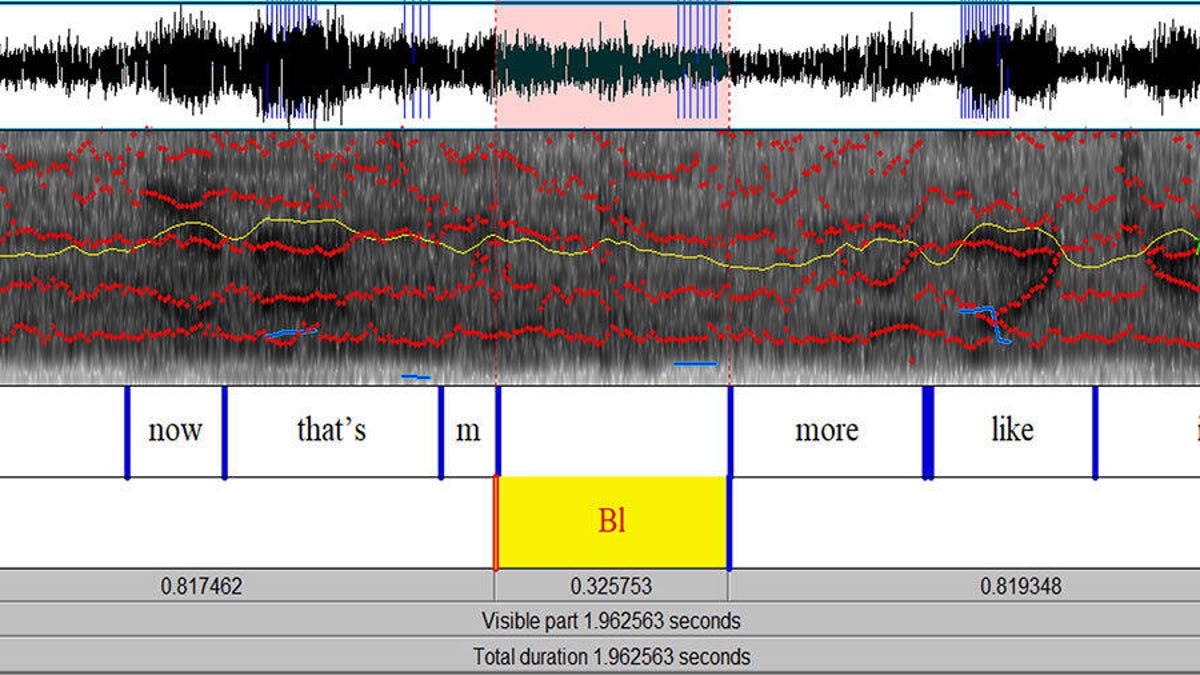Rick and Morty is full of burps, and a scientist just analyzed all of them
Turns out Rick Sanchez has a lot to teach us about communicating.

This is what Rick's burps look like when you run them through a spectrogram using the phonetics software Praat.
There are more than 200 belches in the popular animated series Rick and Morty, and researcher Brooke Kidner listened to them all, sifting the sounds for sub-textual speech in mad scientist Rick Sanchez' frequent, gin-soaked burps. Her analysis of the internet's favorite drunken grandpa marks what may be the first linguistic research in more than 60 years to look into the paralingual nuances of burps.
Grunts, groans, gasps and, yes, even belches -- linguists have long puzzled over humans' use of nonword sounds to communicate. But, according to the Acoustical Society of America, Kidner's research -- presented Thursday at the organization's San Diego conference -- has shed new light on non-word sounds.
"There has not been any serious attempt to acoustically or phonetically describe the characteristics of belching in over 60 years," Kidner said in a release. "But there are more and more papers being published on these types of phenomena, and what important implications they have for the speech communities that utilize them."
A visual cue used by animators to accompany the acoustic characteristics of belching within the data set, called the "wavy lip gesture."
Kidner, a linguistics Ph.D. student at the University of Southern California, broke Sanchez's burps down to their fundamental qualities to parse which, if any, were communicative. Burps have "jitter" and "shimmer" -- which tell you how stable the sounds are in terms of frequency and amplitude -- and they rumble at a relatively low 300 hertz. They jitter 4% more than normal speech and shimmer 15% more.
After breaking the 200-some burps down by quality, Kidner examined a 140-plus token data set and cross-referenced the scripted burps against those that met the criteria. She was then able to discover which sounds were gut grumbles and which were other paralinguistic sounds, like Justin Roiland gasping for air.
Now if only she'd analyze that trans-dimensional portal gun.
Originally published Dec. 5, 12:04 p.m. PT.

